How to give customers that holiday feeling this summer
Bring the sunshine to your venue with these holiday-themed food, drink and event ideas from Spain, USA, Turkey and more
From fisherman jumpers to Cromer crab, the UK’s fishing heritage is an essential part of our island’s cultural identity. However, it’s taken a big hit in the past 18 months with Covid-19 and Brexit.
Industry body Seafish says: “In the UK, we export a lot of the seafood we catch and import much of the seafood we eat.” European exports have been made more difficult with Brexit due to extra paperwork and demand has been down across the world because of the pandemic causing hospitality to be closed for long periods. It’s never been more important to support our local fisheries and encourage more Brits to eat seafood.
“There was a 20% drop in value of seafood exports in 2020”
Greg Smith from Seafish shares: “Changing perceptions is the first step towards increasing seafood consumption in the UK over the long term – the goal for our Love Seafood initiative. We were heartened by a consumption increase in 2019 before the Covid-19 pandemic hit, but we know there’s still a lot more work to do, especially now. Getting more seafood on UK menus would be a fantastic step forward.”
We have access to an abundance of wonderful seafood in our shores, especially when you look beyond the usual cod and haddock. So, do your bit to support our seafood by popping some tasty additions on your menu. Take a look at our top, sustainable British fish and seafood picks to serve this summer and beyond.
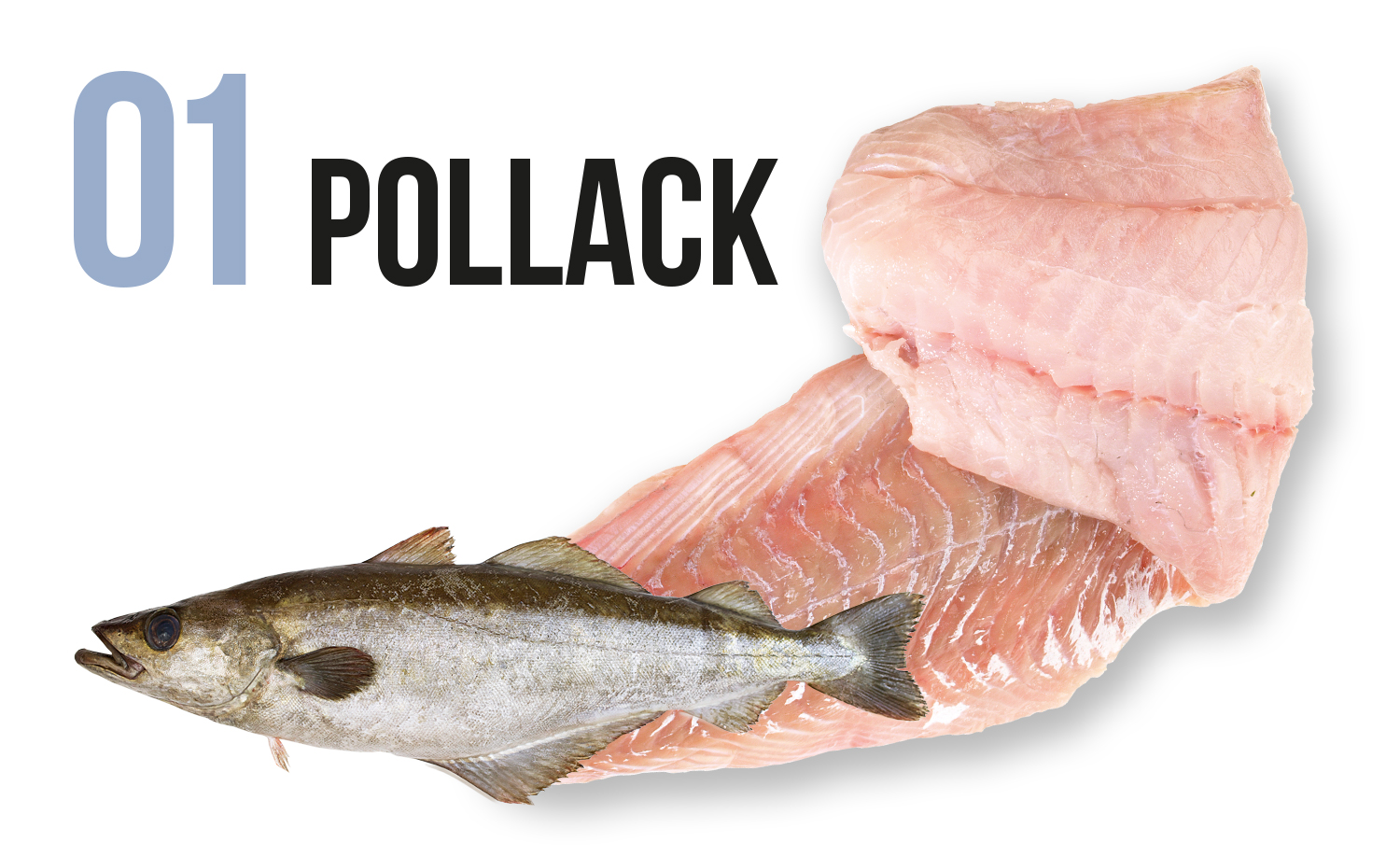
Pollack is the slightly smaller and more sustainable relative of cod. Line-caught pollack from the south-west is a great sustainable choice, at its best from May to October. It can be used in most white fish recipes as a simple replacement. Use a quality curry paste, plenty of garlic, ginger, coconut milk and chillies to create a delicious pollack curry. Serve with rice and naan bread to give customers an Indian feast.
Or try this flavour-packed Tom Yum soup.
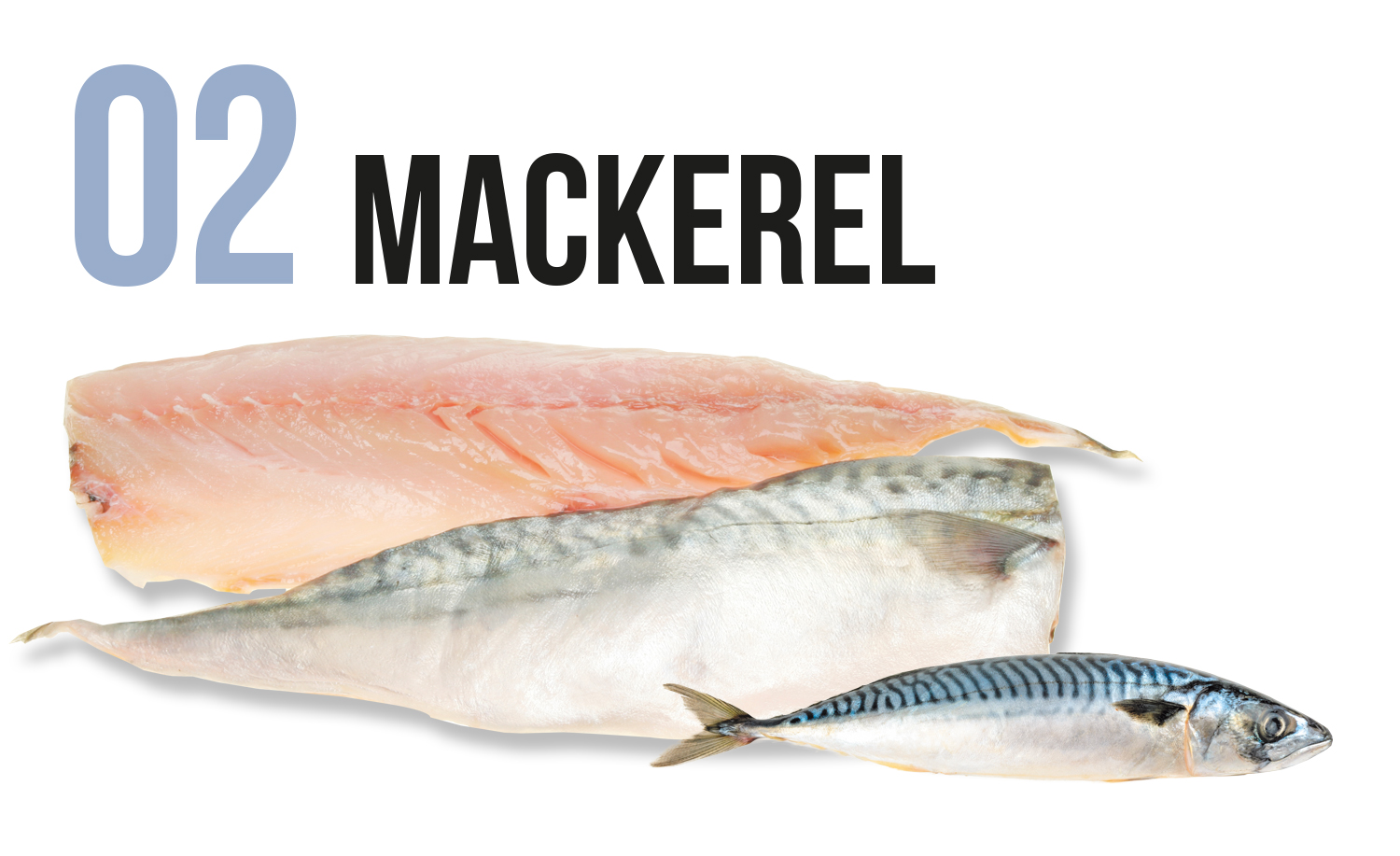
Mackerel is full of flavour and abundant on British shores. Cornish mackerel caught by hook and line is an excellent sustainable option. Grill or BBQ whole mackerels seasoned with salt, pepper, and fresh herbs such as thyme. For an inviting sharing plate, lay the grilled fish on a bed of sweet, roasted tomatoes and serve with bread to mop up.
A great summer option for mackerel is combining it with a Greek salad – check out the recipe here.
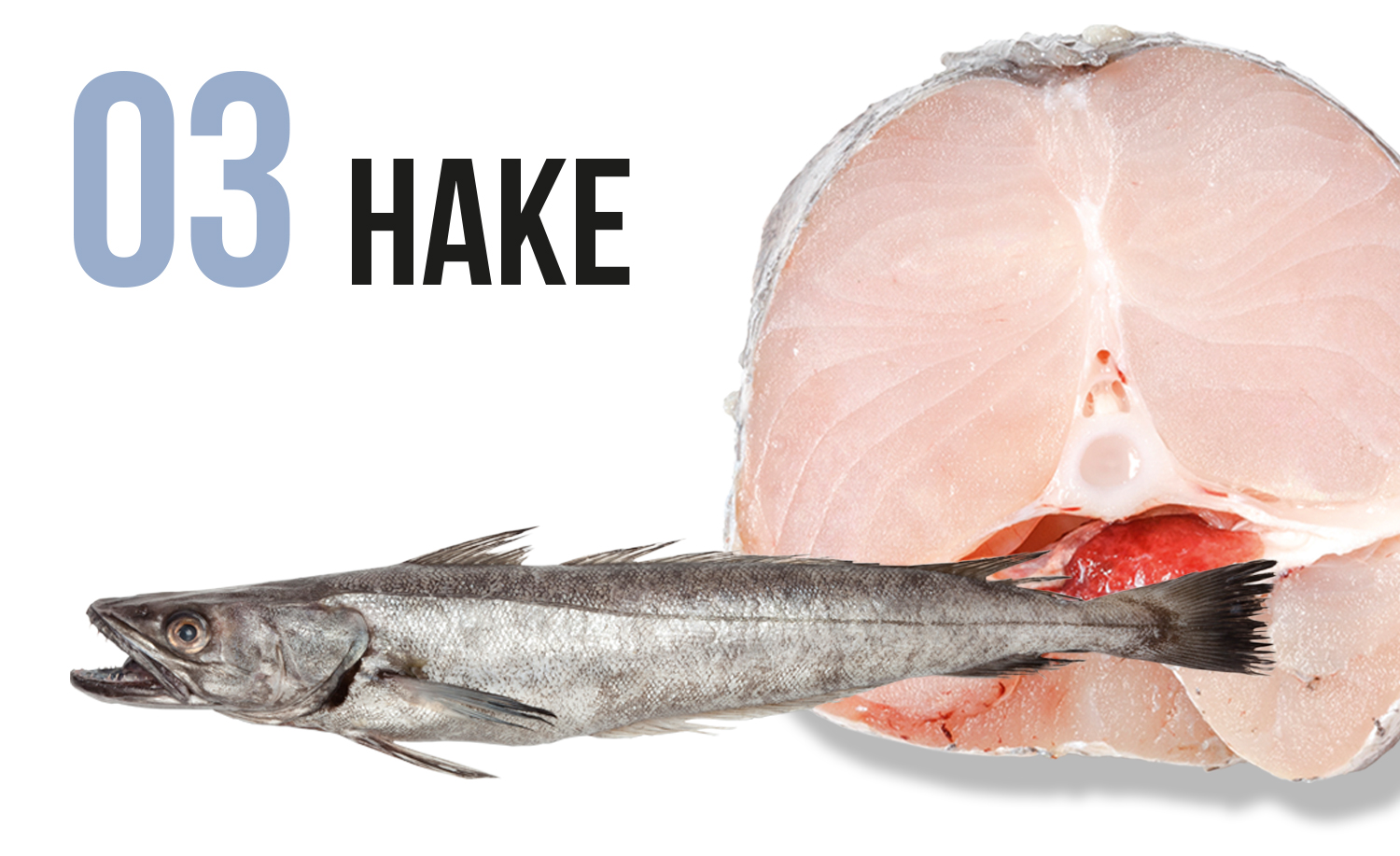
Light in flavour but firm and meaty in texture – don’t be afraid to throw big flavours at this fish. It’s really popular in Spain so many customers might have tried it on holiday. Try baking in orzo (rice-like pasta) with smoky chorizo and red chilli. Look out for hake from Cornwall or the North Sea and don’t buy it fresh until after July (when the breeding season ends).
Give customers the taste of Spain with this baked hake and chorizo dish.
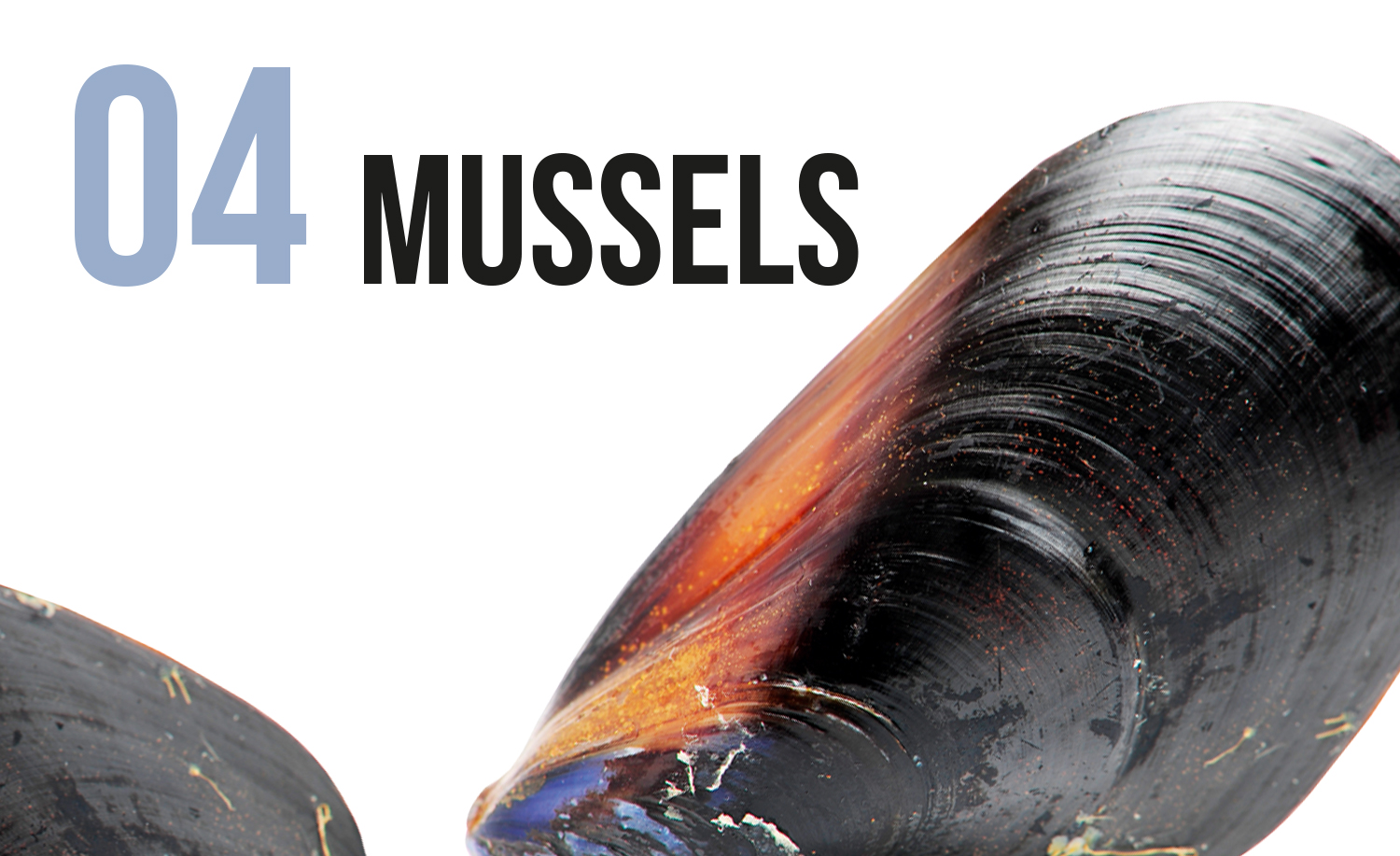
This homegrown shellfish is best eaten from September for those late summer meals. Many mussels in the UK are rope-grown, which means they pick up less grit and barnacles. The shells are thinner with a high meat content.
On their own, mussels are incredible simply steamed with white wine and a dash of cream but are an equally brilliant addition to stews, curries, and paella dishes. Here is a classic moules frites to try.
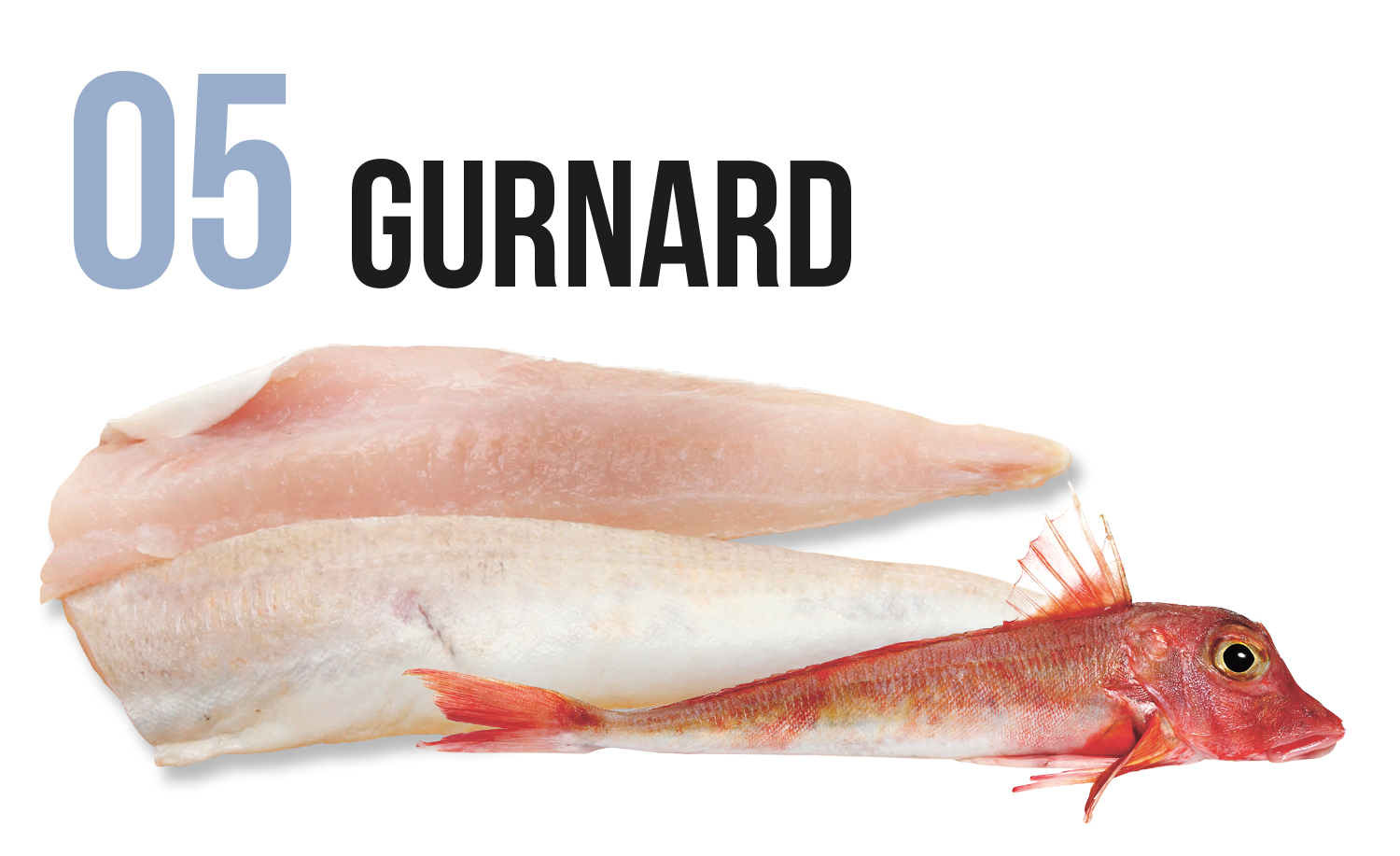
With large pectoral fins that move like bird’s wings, gurnards are known as the robins of the sea. Grey or red gurnard from the North or Celtic Seas are the ones to choose. This fish has been largely ignored for many years but is slowly starting to grow in popularity with chefs looking for more sustainable and tasty seafood options.
While its taste isn’t as strong as other fish such as salmon, it has a distinct flavour and matches well with earthy ingredients such as Jerusalem artichokes. You could also complement it with contrasting sharp, acidic flavours by lightly pan-frying with garlic, salt and parsley and a squeeze of fresh lime juice. Its firm flesh means it holds together well on frying.

This is a flaky white fish, more sustainable than cod and haddock, with a thick skin that’s delicious when pan-fried with salt to crisp up. You could use coley in place of any white fish and it would be great in Asian dishes such as Tom Yum soup. One of the more sustainable types is from the north-east Arctic seas.
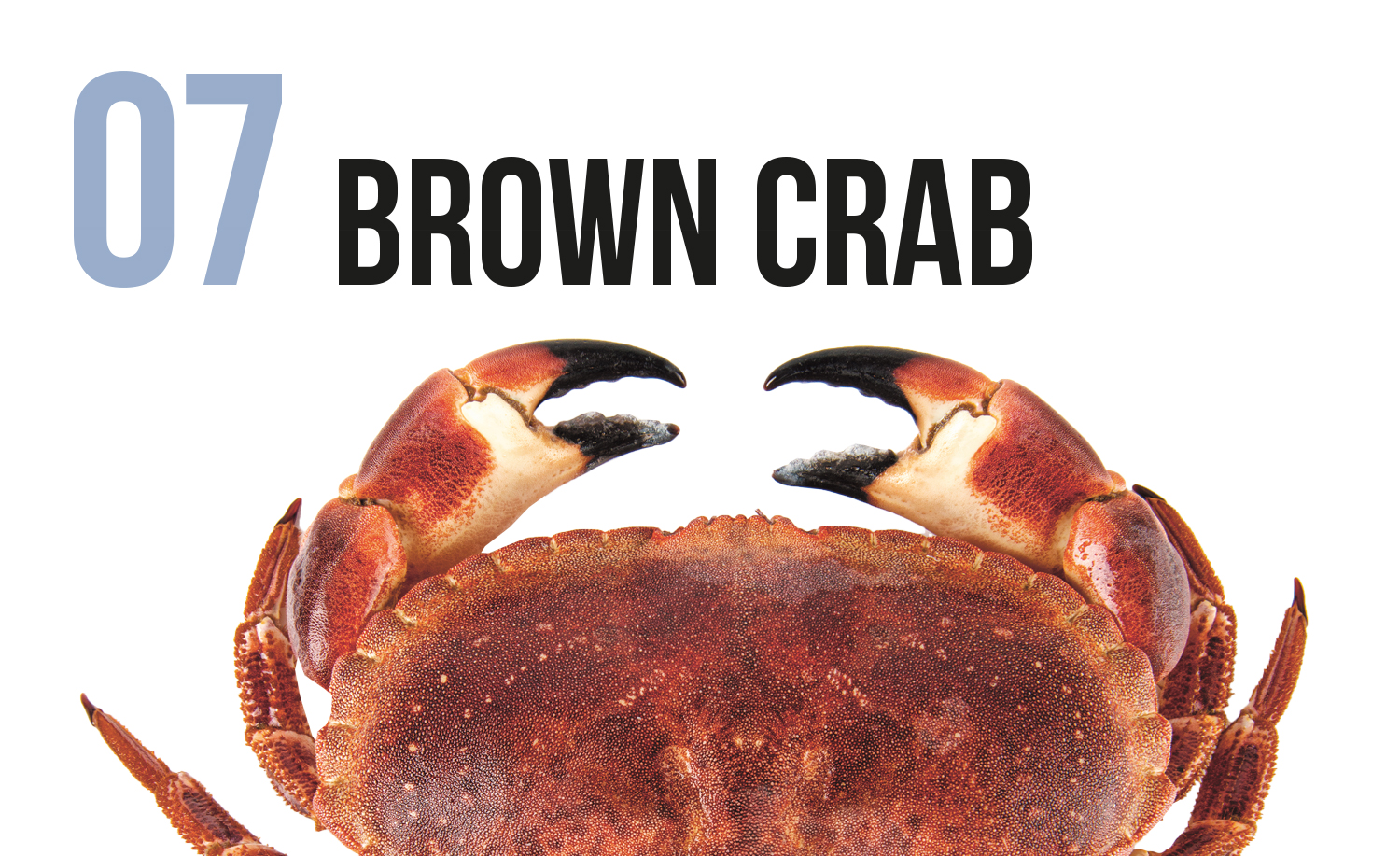
A native to our coastal waters, the most sustainable brown
crab to choose is from the Shetlands in Scotland with the
MSC-certification. Go for crabs that are at least 13-14cm from April to October. The male crabs (cocks) have larger claws with more white meat than brown; although the females are also a great pick as the meat tends to be sweeter.
As well as in crab cakes, the flaked meat is delicious in pasta dishes with garlic, lemon and harissa paste, or stir some into a macaroni cheese for a luxury upgrade.
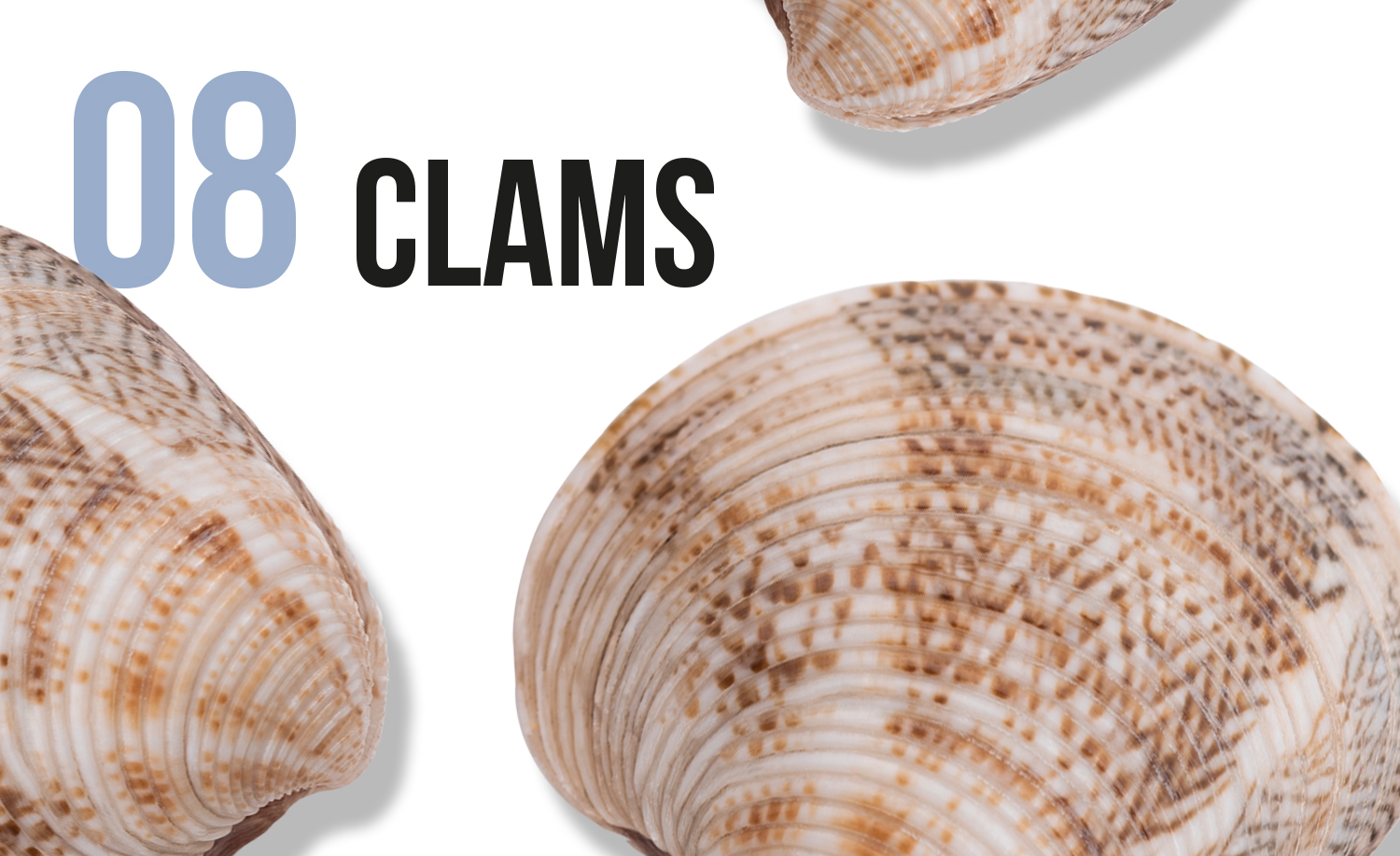
While only the size of a 20p coin, these tiny shell creatures are sweet and meaty. The Manila variety, farmed in the UK, has minimal environmental impact so is a safe choice.
No need to dress them up – spaghetti alle vongole (clams) is simplicity itself. Soften garlic and chilli in olive oil, add the clams and wine, then bubble off with the pan lid on. Remove any unopened clams, then toss with cooked spaghetti, parsley, lemon juice and zest, and season to taste. Serve with samphire for an extra seaside flourish.
Have a go at this garlic and herb clam dish.
Sign in to save topics you love, and build your archive of events, menus and articles.